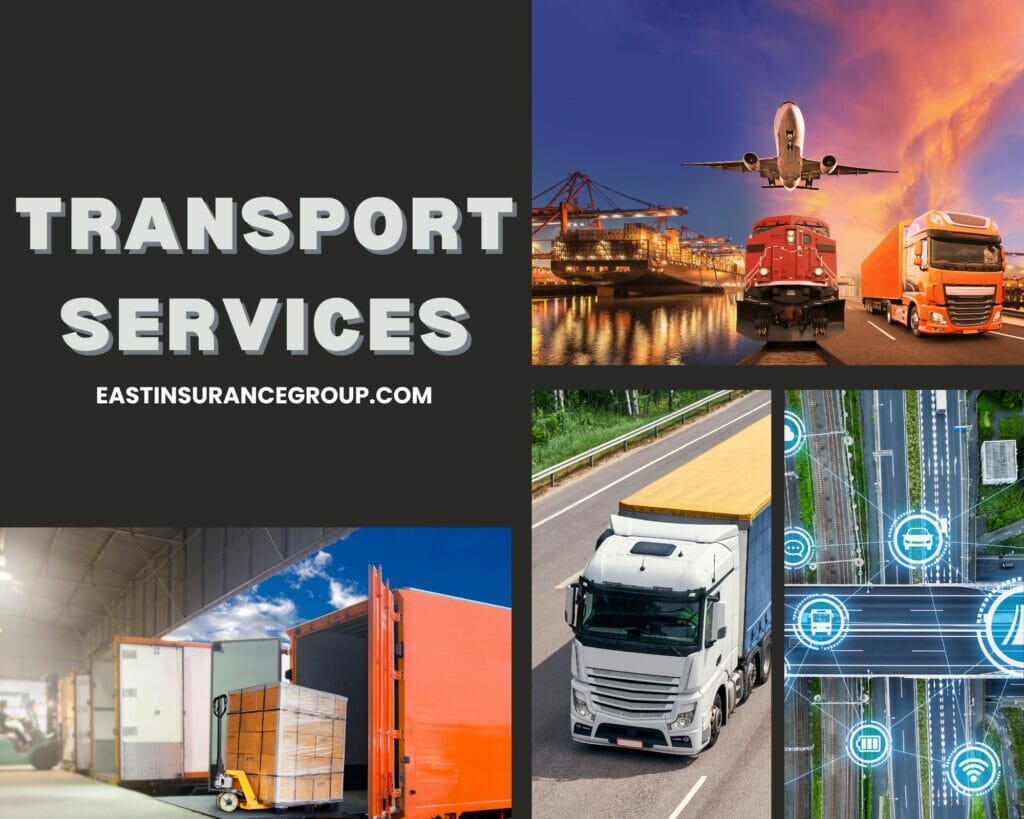Introduction
In the opening section of your guide, you set the stage for what readers can expect to learn and why transport insurance is important. This section typically includes the following components:
- Definition of Transport Insurance:
- Transport insurance is a financial safeguard provided to individuals and businesses involved in the transportation of goods or passengers. It is designed to protect against various risks, such as damage, loss, theft, accidents, or liability issues that can occur during the transportation process. Transport insurance can cover a wide range of modes, including road, rail, sea, and air transport.
- Importance of Transport Insurance:
- This part emphasizes why transport insurance is crucial. You can mention that transporting goods or people often involves inherent risks, and unexpected events can lead to significant financial losses. Transport insurance helps mitigate these risks and provides peace of mind to businesses and individuals. It ensures that in case of an unforeseen event, the financial burden is shared with the insurance provider rather than being solely the responsibility of the insured.
- Purpose and Scope of the Guide:
- In this section, you outline the objectives and focus of the guide. You can mention that the purpose is to provide a comprehensive understanding of the intricacies of transport insurance, helping readers make informed decisions. The scope of the guide includes covering various types of transport insurance, key concepts, factors that affect transport insurance, tips for choosing the right policy, and much more. It serves as a valuable resource for both beginners and those looking to deepen their knowledge of this critical aspect of transportation and logistics.
By providing a clear introduction, you grab the reader’s attention and give them a sense of what they will gain from reading the guide. It sets the tone for the rest of the content and motivates the reader to explore further.
History
Transport insurance has a rich history that dates back centuries. The concept of safeguarding goods during transportation can be traced to ancient trade routes where merchants faced the risk of theft, piracy, and natural disasters. However, modern transport insurance as we know it today has evolved significantly.
Historical Perspective: In ancient times, traders and merchants relied on informal agreements to share the risks of transporting goods. These agreements were often based on trust within the trading community. As global trade expanded, the need for more formalized insurance mechanisms arose.
The Birth of Modern Transport Insurance: The 19th century saw the emergence of formalized transport insurance. Lloyd’s of London, founded in 1686, played a pivotal role in the development of marine insurance. This marked the beginning of the structured insurance industry. As transportation methods diversified with the advent of railways, the insurance sector expanded its offerings to cover various modes of transport.
The Global Reach
In today’s interconnected world, it is not limited to a specific region or country. It plays a vital role in facilitating international trade. Whether goods are transported across state lines or oceans, having comprehensive coverage is essential.
Cross-Border Trade: International trade involves complex logistics and numerous risks. It ensures that businesses are protected against unforeseen circumstances, such as delays caused by customs issues or damage during transshipment.
Trade Facilitation: The availability of the insurance encourages businesses to engage in cross-border trade. It gives companies the confidence to explore new markets and expand their operations globally.

The Legal Framework
Transport insurance is not just a business decision; it often has a legal dimension. Depending on the jurisdiction and mode of transportation, there are various regulations and laws that govern transport insurance. Understanding this legal framework is crucial for businesses operating in the transportation sector.
International Conventions: Several international conventions address the issues. The Hague-Visby Rules, for instance, regulate the liability of carriers in maritime transport. Knowing how these conventions apply to your business can help in assessing insurance needs.
Domestic Regulations: In addition to international laws, each country may have its own regulations governing the insurance. This can include requirements for minimum insurance coverage, reporting obligations, and dispute resolution mechanisms.
Emerging Trends
As with any industry, transport insurance is not static. It continually evolves to adapt to changing circumstances and emerging risks. Here are some of the recent trends shaping the transport insurance landscape:
Technology Integration: The integration of technology, such as telematics and IoT devices, is revolutionizing transport insurance. These tools provide real-time data on vehicle performance and location, allowing for more accurate risk assessment and pricing.
Sustainability and Environmental Concerns: With growing awareness of environmental issues, transport insurance is increasingly incorporating sustainability factors into risk assessment. Businesses that invest in eco-friendly transportation options may benefit from reduced insurance premiums.
Cybersecurity Risks: In an era of digitalization, the transport sector is vulnerable to cyber threats. Transport insurance providers are now offering coverage for cyberattacks and data breaches, recognizing the importance of safeguarding sensitive information.
Case Studies and Success Stories
To illustrate the practical benefits, consider including some real-world case studies or success stories. These could highlight instances where transport insurance played a pivotal role in protecting businesses from significant losses or disruptions.
Case Study 1 – The Perils of Piracy: Tell the story of a shipping company that faced the threat of piracy while transporting valuable cargo through pirate-infested waters. Discuss how their comprehensive transport insurance coverage helped them recover their losses and continue their operations.
Case Study 2 – Supply Chain Resilience: Explore how a multinational corporation strategically used transport insurance to build resilience in its supply chain. Highlight how they diversified their transportation options and leveraged insurance to mitigate risks during times of crisis.
Conclusion
It is not merely a financial safeguard; it is a strategic tool that empowers businesses to navigate the complexities of the transportation sector with confidence. Understanding its historical evolution, global significance, legal dimensions, emerging trends, and real-world applications can help businesses make informed decisions and secure their place in the dynamic world of transportation.
By continually adapting to new challenges and opportunities, it remains a steadfast pillar of support for businesses in the ever-evolving landscape of goods transportation. As trade continues to connect the farthest corners of the globe, and will undoubtedly remain a vital component of the global economy.

